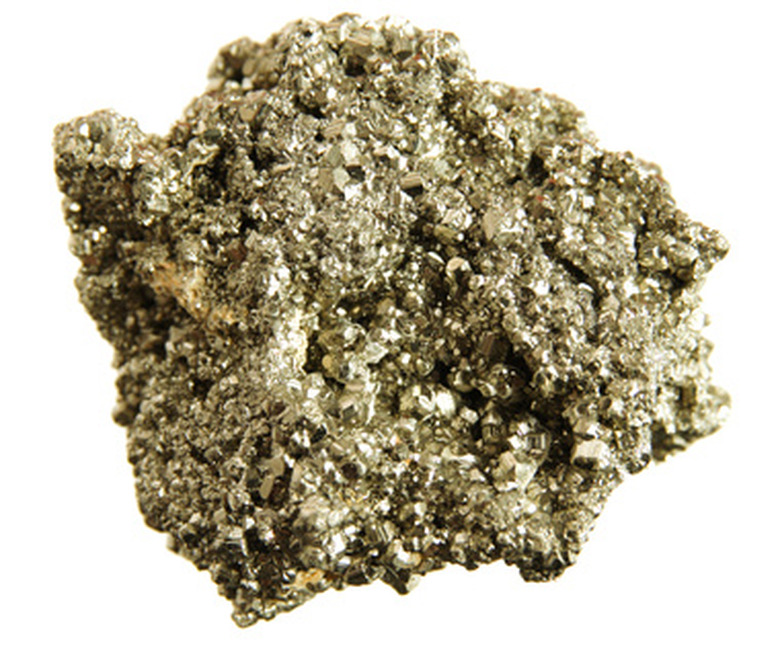How To Test For Gold Ore
Gold has been a highly prized metal for many years. Not only is gold mining a multimillion dollar industry, it is a popular hobby. As long as you have a surface exposure of suspected gold on a rock, you can conduct an at-home test. The same test described here also works for gold nuggets, gold flakes and gold dust found from gold panning. The same characteristic that makes gold so desirable for jewelry and industrial uses makes it hard to test. Gold is chemically stable; it needs to be reacted with a mixture of acids, called aqua regia, to dissolve.
Step 1
Prepare your testing solutions and place them into testing bottles. One bottle will contain straight nitric acid, and in the second bottle you will put the aqua regia. Mix the aqua regia in the graduated cylinder and then carefully pour it into a testing bottle. Aqua regia is made by mixing one part nitric acid to three parts hydrochloric acid.
Step 2
Scratch your samples, one at a time, across the testing stone to leave a mineral streak.
Step 3
Pipette a small amount of nitric acid onto the rock streak. Optionally, you may also put acid directly on your sample.
Step 4
Observe the color the acid turns when it reacts to the rock streak. If gold is present in more than 14 karat purity, there will be no reaction. If gold is present in 12 karat concentration, the sample will turn light brown. If 10 karat gold is present, the sample will turn dark brown. A pinkish cream color indicates a low concentration of gold. Blue indicates copper.
Step 5
If the sample did not react, follow this second step to determine if there is gold present in a higher purity. On the opposite side of the testing stone, rub the rock across to leave a streak. Start with the 14K gold wire. Streak the wire across the plate beside the gold sample. Make sure the lines do not intersect.
Step 6
Apply aqua regia to both streaks. The aqua regia will react—bubble and fizz—if it contacts gold. The acid will turn the same color when the purity of the ore sample matches the test wire. Aqua regia dissolves gold, so do not put it directly on your sample.
Step 7
Repeat with higher-karat wire, if necessary, until the purity is determined.
Things Needed
- Ore samples
- Gloves
- Graduated cylinder
- Hydrochloric acid
- Nitric acid
- Distilled water (optional)
- 2 Testing bottles
- Pipette
- Rock streak plate or test stone
- 4 Testing wires, 14K, 18K, 20K and 22K
TL;DR (Too Long; Didn't Read)
Complete gold-testing kits are available from specialty shops. Most gold kits contain all the items you need; however, because some companies are apprehensive about shipping acids, their kits may not contain the acids. If the acids are not included, you can go to your local chemical supplier to purchase them. Many kits do not share the ingredients in their testing solutions, or they premix aqua regia. The instructions here are meant for you to make everything from scratch, so if you do purchase a testing kit, make sure you follow its instructions.
Warning
The acids you are dealing with can be dangerous. Exercise caution when using the acids, cleaning up spills immediately and storing them in a safe place. Gold reacts easily with aqua regia, so err on the side of caution and buy a lower concentration of acid. You may also dilute your acid with some distilled water. If you decide to dilute your acid, make sure your pour acid into water, not water into acid.
Cite This Article
MLA
Clark, Lea. "How To Test For Gold Ore" sciencing.com, https://www.sciencing.com/test-gold-ore-6189440/. 24 April 2017.
APA
Clark, Lea. (2017, April 24). How To Test For Gold Ore. sciencing.com. Retrieved from https://www.sciencing.com/test-gold-ore-6189440/
Chicago
Clark, Lea. How To Test For Gold Ore last modified March 24, 2022. https://www.sciencing.com/test-gold-ore-6189440/
